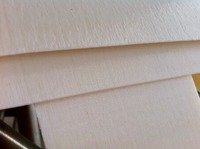 CNET published an interesting article on Quirky, the New York based startup that crowdsources inventions. Reporter Rich Brown visited the company in hopes of seeing how they make use of 3D printing technology in a design firm. He describes his thoughts on the collision design firms such as Quirky vs. up and coming 3D model services like Cubify and Thingiverse.
CNET published an interesting article on Quirky, the New York based startup that crowdsources inventions. Reporter Rich Brown visited the company in hopes of seeing how they make use of 3D printing technology in a design firm. He describes his thoughts on the collision design firms such as Quirky vs. up and coming 3D model services like Cubify and Thingiverse. But one thing he said got us thinking more about our Ten Barriers to 3D Printing At Home post. He evidently purchased a “Printed Gear Heart” for his wife. What happened?
When it arrived, the heart was rough. The gears rotate properly, it feels sturdy, and my wife loved it. But the printed layers are obvious. The seller might have sanded it down, but that would likely disrupt the gear mechanism. You could not sell this thing at Target.
We find this reaction very common among folks not familiar with the current state of affairs in 3D printing. Objects do indeed look rough and are simply not as smooth as finished or injection molded alternatives. “You can see the layers!” They brilliantly exclaim.
Yes, the layers are there. And they’ll stay there until the 3D printer manufacturers figure out inexpensive ways to deliver smooth objects. Clearly this must be a goal, but we’re not sure if this is achievable with the technology most commonly used in home 3D printers: Fused Deposition Modeling, in which an extruder is mechanically dragged through a path describing each individual layer of the object. Much higher resolutions will mean significantly more extruder movement that would massively slow down the entire printing process.
Is it time for another approach?
Via CNET

